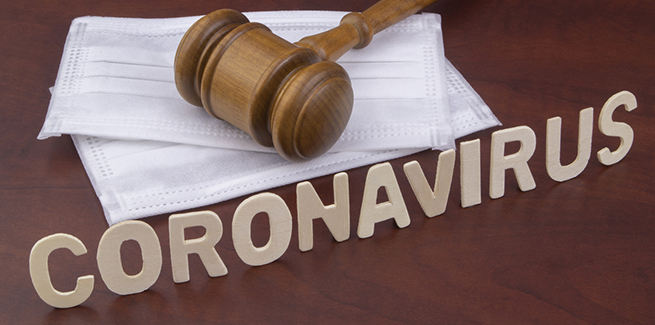Family First Coronavirus Response Act: Fact sheet

In-depth articles can be very helpful on subjects as important as COVID-19 and the legislation surrounding it—a full article on this topic can be found here.
And so can bullet-point pieces that you can scan to absorb the main points. So, here’s an easily scannable fact sheet to use in your practice.
Who: Congress and the president
What: Passed the Families First Coronavirus Response Act and associated legislation
When: On March 18, 2020 ,to go into effect on April 2, 2020, and last until December 31, 2020
Where: This is federal legislation
Why: To provide relief to families and businesses
Main components of the act
Paid sick leave for will be available for employees affected by COVID-19, including those:
- subjected to quarantine or isolation (federal, state, or local order)
- advised by a health are provider to self-quarantine
- experiencing symptoms and seeking diagnosis
- serving as caregivers for people with the virus (including nonfamily members), including those:
- subject to quarantine or isolation (federal, state, or local order)
- advised by a healthcare provider to self-quarantine
- caring for his or her child if the school or childcare center is closed
- experiencing a similar condition
This will apply to employers with fewer than 500 employees, who need to:
- pay qualifying fulltime employees with 80 hours of paid sick leave at the regular rate or at two-thirds when caring for others; these wages will be capped:
- at $511 daily for $5,100 in total per employee for their own use
- at $200 per day up to $2,000 in total per employee to care for others
Healthcare providers and emergency responders may be excluded.
In addition:
- paid sick leave will not carry over to 2021 and can be in addition to paid sick leave currently provided by the employer
- part-time employees are paid on their average number of hours, calculated on the six-month period before taking the emergency FMLA; employees newer than six months can receive pay based on their average number of hours
- if full-time employees request this, companies should pay them from their 80 hours of emergency sick leave instead of using the initial unpaid leave (ten days) in the emergency FLMA Act
There is also an emergency (temporary) expansion of the Family Medical Leave Act (FMLA) that provides for up to 12 weeks of job-protected leave to:
- allow an employee to care for his or her child, under age 18, who is home from school or childcare because of the virus; note that:
- the first 10 days (reduced from 14) may be unpaid
- during these 10 days, an employee can use accrued sick time/vacation time/PTO
- after the 10-day period ends, the employer typically must pay the employee at two-thirds the regular rate, up to $200 daily/$10,000 in total
- part-time employees are paid on their average number of hours, calculated upon the six-month period before taking the emergency FMLA; employees newer than six months can receive pay based on their average number of hours
This will apply to employers with fewer than 500 employees. The eligibility for an employee to qualify has been lowered; they need only to have worked for an employer for 30 days prior to the leave. Healthcare providers and emergency responders may be excluded.
Small businesses with fewer than 50 employees could be exempt if this would “jeopardize the viability of their business” and:
- these companies should return employees to the same of the equivalent position after leave ends but are exempted if the employee’s position no longer exists because of this emergency situation; and
- during the following year, the employer must make an effort to return this employee to an equivalent position
To help employers, there is the Emergency Unemployment Insurance Stabilization and Access Act Of 2020. This provides $1 billion for emergency grants to states for unemployment insurance processing and payments. Check with your state to see what might be available.
Employers can qualify for refundable tax credits when required to pay emergency paid sick leave and emergency paid FMLA. These tax credits go against the amount of Social Security taxes that employers pay.
With the sick leave portion, they are entitled to a credit equal to 100%, up to 10 days per employee per quarter. More specifically:
- up to $511 per day for time the employee needs for himself/herself
- $200 daily when caring for someone else
With the FLMA portion, they are entitled to a credit equal to 100%, up to 10 days per employee per quarter. These are capped at $200 daily for each employee, up to $10,000 per quarter.
Additional notes
Private health plans must cover diagnostic testing and related services to employees and dependents. This must happen without a deductible, copayment, or coinsurance being applied. This means the actual diagnostic testing, plus healthcare provider costs, whether in person or through telehealth for diagnostics, and any facility costs related to evaluating and furnishing these diagnostics. Prior authorization will not be required.
Many states are also considering emergency legislation related to paid sick leave and medical leave laws. These may provide benefits in additional to federal relief packages.
Photo credit: © iStock/Valerii Evlakhov



